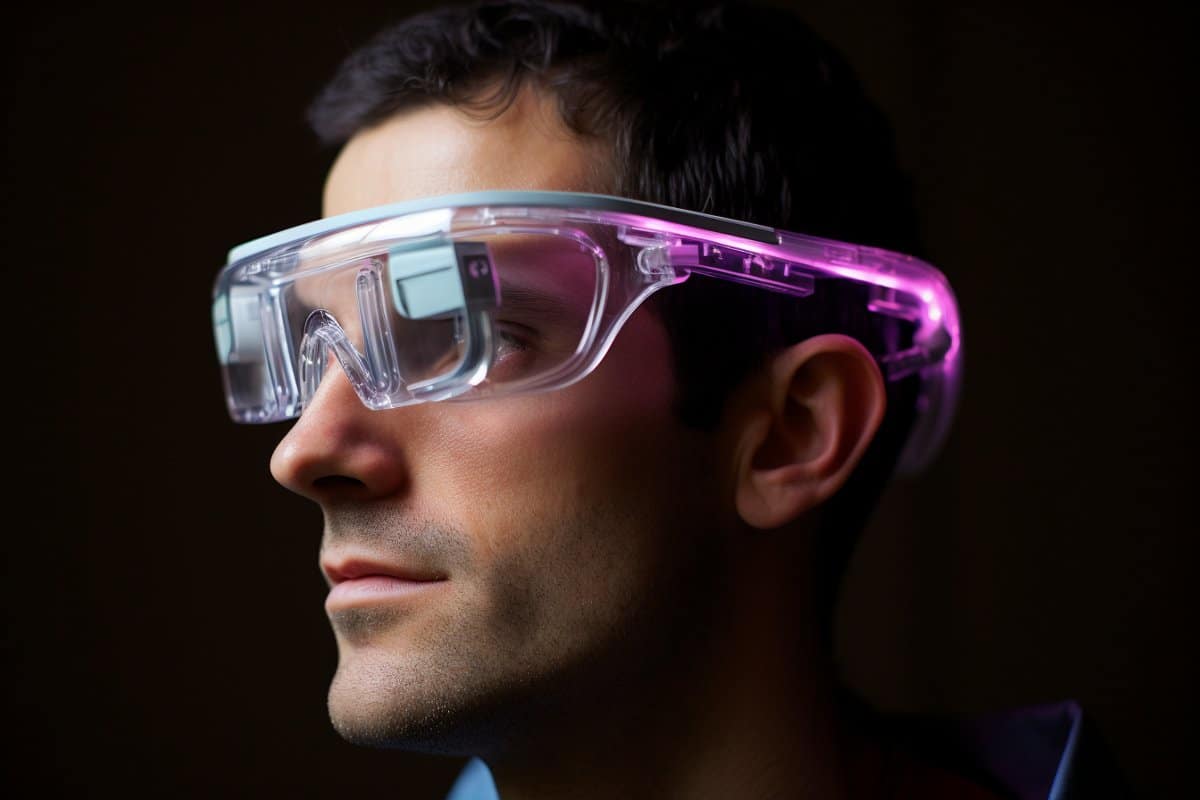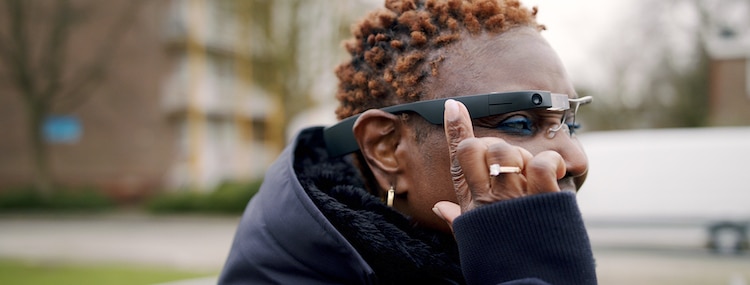How Smart Glasses for the Visually Impaired Are Revolutionizing Daily Life
Enhancing Ease Of Access With Assistive Modern Technology for the Blind
The integration of assistive technology for the blind stands for a pivotal advancement in availability, fundamentally changing just how individuals browse their environments and engage with culture. As we explore the varied types of assistive devices and their tangible influences on daily living, it becomes necessary to check out exactly how continuous technical improvements are improving the landscape of assistance for the blind neighborhood.
Review of Assistive Innovation
Assistive technology refers to a range of tools and software application designed to boost the capacities of people with disabilities, consisting of those that are blind or aesthetically impaired. This technology plays a crucial duty in promoting independence and boosting the top quality of life for users. By providing alternate approaches for accessing details and executing everyday tasks, assistive modern technology encourages individuals to navigate their atmospheres much more effectively.
The development and execution of assistive modern technology welcome a range of concepts focused on promoting ease of access. These concepts include user-centered design, which prioritizes the needs and preferences of the person, and the integration of technology right into everyday tasks. Such innovations ensure that assistive devices are not only functional however likewise intuitive and very easy to use.
Moreover, assistive modern technology encompasses a varied range of remedies, from low-tech options like magnifiers to state-of-the-art technologies such as display viewers and Braille screens. The continuous evolution of this field is driven by the requirement to deal with the one-of-a-kind challenges dealt with by individuals with visual problems (Wearable technology for low vision). As technology remains to development, the potential for improving ease of access and advertising inclusivity remains encouraging, inevitably adding to a much more equitable culture

Sorts Of Assistive Instruments
Many sorts of assistive tools are available to support people that are blind or visually impaired, each designed to attend to particular demands and difficulties. These gadgets can be generally classified right into 3 major types: low-tech, mid-tech, and high-tech remedies.
Low-tech gadgets consist of products such as magnifiers, Braille labels, and tactile maps. These are reasonably simple tools that boost the user's capability to interact with their atmosphere without calling for complicated innovation.
Mid-tech gadgets often involve advanced attributes, such as digital magnifiers and portable Braille note-takers. These tools can offer performances like speech result, enabling individuals to access details much more effectively.

Influence On Daily Living
The availability of numerous assistive gadgets significantly boosts the lifestyle for individuals who are blind or visually damaged, influencing their day-to-day living in extensive methods. By incorporating innovations such as screen visitors, Braille shows, and audio summary solutions right into their routines, individuals get better autonomy and freedom. These tools facilitate accessibility to info, allowing individuals to carry out daily tasks, such as reviewing emails, browsing public rooms, and appreciating media web content.
Moreover, assistive devices empower individuals to engage even more fully in social communications and neighborhood tasks. The ability to make use of smart from this source devices outfitted with availability functions enables seamless interaction and connection with others. This connection promotes a feeling of belonging and reduces sensations of isolation.
In professional settings, assistive modern technology sustains efficiency by permitting people to total job tasks effectively. Devices like voice recognition software application and specialized magnifying tools enable individuals to take part in the workforce on equivalent footing with their sighted peers.

Innovations in Modern Technology
Recent technological developments have significantly transformed the landscape of devices offered for people who are blind or aesthetically damaged. The combination of artificial knowledge (AI) and artificial intelligence has actually triggered applications that boost navigating and things recognition. Smart device applications can now make use of AI to determine and define environments in real-time, offering individuals with useful contextual details.
Furthermore, developments in haptic technology have led to the advancement of wise walking sticks geared up with sensors that detect barriers and offer responsive responses. This equips individuals to navigate their environment with increased confidence and self-reliance. Developments in text-to-speech software application and braille displays have enhanced the access of digital content, allowing for seamless interaction with various media.
Wearable modern technologies, such as smart glasses, are also making strides in aiding visual problems. As innovation continues to evolve, the possibility for even more transformative tools stays on the perspective.
Future Trends and Innovations
As innovation swiftly proceeds, the future of assistive devices for people that are blind holds immense promise. Developments in man-made knowledge (AI) and artificial intelligence are positioned to reinvent the way blind individuals connect with their atmospheres. AI-driven applications are being developed to enhance things acknowledgment, permitting individuals to determine and browse their environments with greater ease and precision.
Additionally, developments in haptic comments technology are making it possible for the development of responsive maps and navigating help that provide real-time details via touch. These visit the website innovations not only enhance wheelchair yet additionally foster independence. In addition, wearable gadgets furnished with augmented truth (AR) features are emerging, using customers aesthetic information with audio descriptions, therefore linking the gap in between the digital and physical globes.
In addition, the integration of clever home modern technology offers brand-new opportunities for ease of access, permitting individuals to manage their living environments with voice commands or mobile phone applications. As cooperation between tech designers and the blind community continues, the emphasis on user-centered layout will certainly ensure that future technologies are customized to fulfill the one-of-a-kind demands of this populace why not try these out (Wearable technology for low vision). The trajectory of assistive innovation assures a more empowering and inclusive future for individuals that are blind
Conclusion
Finally, assistive technology plays an essential duty in improving availability for individuals with visual impairments. The diverse array of devices, including screen visitors and smart canes, dramatically improves daily living and promotes self-reliance. Continuous innovations in technology and user-centered layout ensure that these tools cater effectively to the unique requirements of the blind community. As advancements progress, increased inclusivity and empowerment can be anticipated, inevitably enhancing the lifestyle for those affected by visual disabilities.
The integration of assistive innovation for the blind stands for a pivotal advancement in access, fundamentally altering exactly how people browse their environments and engage with culture.Assistive technology refers to a variety of devices and software program made to improve the capabilities of individuals with specials needs, including those who are blind or visually impaired. Wearable technology for low vision.As technology quickly progresses, the future of assistive tools for individuals that are blind holds enormous pledge. The trajectory of assistive technology assures an extra empowering and inclusive future for individuals who are blind
In verdict, assistive innovation plays a crucial role in enhancing accessibility for individuals with visual problems.